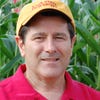August 30, 2017

The big V’s of variability and volatility challenged many Iowa farmers this year.
Get out into your fields long before the combine, and create your own in-field yield estimates by farm and by field. Estimating yield potential across the fields you farm can be a big benefit in making decisions related to handling, storage and marketing. Corn yield estimates using kernel counts and ear length could have been made in late July and early August. If you didn’t do that yet, do it now.
For soybean yield estimates using pod counts, wait until late August or early September. The USDA National Agricultural Statistics Service’s crop production reports to be released Sept. 12 and Oct. 12 should clear up much of the national and state crop yield uncertainty.
Continue to address yield variability in your fields by scouting during the growing season on a regular basis. Try to solidify answers as to where and why variability occurred. Once you record actual yield data at harvest with your yield monitor, overlay that information with both soil and drainage maps. You can expect a large portion of the yield variability to reflect good drainage that led to early planting, and water-holding capacity that sustained crops during hot, dry summer conditions.
Managing price volatility
Having a crop marketing plan with price and time objectives proved invaluable in managing price volatility the past few months. Farmers with plans were likely successful in overcoming the emotion and procrastination that comes with not marketing grain during futures price rallies that often occur in June or early July. Such rallies have occurred in each of the past three years, but large ending stocks limited the potential for significantly higher futures prices.
For preharvest marketing new-crop bushels, consider the farm’s cost of production and a reasonable profit margin. Since yield is unknown, use your farm’s actual production history and leverage your revenue protection crop insurance. You have a guaranteed yield (your farm’s APH times level of coverage) and guaranteed price (new-crop futures average prices in the month of February).
At harvest, the missing new-crop insurance bushels from your guaranteed yield would trigger losses for corn at $3.96 per bushel and for soybeans at $10.19 per bushel. In a year when the average futures prices in October for December corn or November soybean futures are higher than the February levels, new revenue guarantees would be calculated.
To determine a revenue shortfall, you still need to subtract your actual harvest yields times this harvest price to determine a potential revenue shortfall.
Determine your actual cost of production by farm and by field with good records. Consider your cash flow needs and perhaps limited on-farm storage capacity as a part of a preharvest marketing plan. For unpriced old-crop bushels being stored, know your cost of grain ownership (on-farm vs. commercially stored bushels). Also consider interest charges that might be accruing on unpaid loan balances. On-farm storage space will likely be needed before harvest begins, so plan well in advance for moving old-crop bushels and getting prepared for harvest.
Farmers should use a variety of marketing tools to spread risk and attempt to time sales to capture futures when prices are high or cash price via basis is narrow. These events tend not to occur at the same time. Avoid using just spot-cash and forward-cash contracts without considering your local basis trends.
Tools such as hedge-to-arrive, basis and minimum-price contracts can separate the decision to accept simultaneously both the futures price and basis. If you prefer to manage the futures price yet not commit bushels to delivery, you should consider using futures hedges, or the use of both call and put options.
As harvest approaches, continue to manage both futures and cash price risks. Basis (difference between cash price minus nearby futures price) will likely remain wide into late summer for much of Iowa, with large ending stocks primarily owned by farmers. Basis could remain wide throughout most of harvest where yields remain large in that geography.
By late October when most of the harvest has wrapped up, you can expect the basis to improve. Farmers using hedge-to-arrive contracts should have already locked in basis for bushels to be delivered in late summer and during harvest.
Maximizing on-farm storage space and limiting bushels left unpriced in commercial storage will be critical. Try to avoid commercial costs of drying, shrink and storage, in addition to the risk of receiving the elevator’s wider basis. For soybeans you plan to deliver to a commercial storage facility, consider a January hedge-to-arrive contract to allow a couple months for capturing a better basis.
Crop insurance considerations
Farmers will likely need to communicate with their crop insurance agent. Limit commingling old and new crop in on-farm bins before an insurance adjuster measures those bins before harvest. If you feed new-crop bushels to livestock, write down those bushels in case of an insurance audit.
Remember, crop insurance premiums are due by Oct. 1. Once you harvest, provide your actual production evidence to your insurance agent to determine if an indemnity payment is likely and to help speed up the claims process.
Johnson is an Iowa State University Extension farm management specialist. Contact him at [email protected].
About the Author(s)
You May Also Like






